Franzis Bluething Board Handleiding
Franzis
Niet gecategoriseerd
Bluething Board
Bekijk gratis de handleiding van Franzis Bluething Board (2 pagina’s), behorend tot de categorie Niet gecategoriseerd. Deze gids werd als nuttig beoordeeld door 49 mensen en kreeg gemiddeld 4.4 sterren uit 25 reviews. Heb je een vraag over Franzis Bluething Board of wil je andere gebruikers van dit product iets vragen? Stel een vraag
Pagina 1/2

Anleitung
Bestimmungsgemäße Verwendung
Das IoT Bluething Board ist ein einfach zu bedienendes, frei programmierbares und
erweiterbares Entwicklungsboard für Bluetooth® im Internet of Things.
Downloads zum Produkt
Die Dokumentation, Treiber und weitere Beispielprogramme finden Sie unter
http://www.buch.cd 67000-7. Als Code geben Sie ein.
Installation des Boards
Um das Board mit neuen Programmen zu bespielen, muss eine Verbindung über die
Micro-USB-Buchse eine Verbindung hergestellt werden. Bei der ersten Verbindung
mit dem PC wird der Treiber automatisch installiert. Sollte das nicht der Fall sein, in-
stallieren Sie den Treiber für den CH340G-Chipsatz manuell. Die entsprechende An-
leitung finden Sie im Downloadbereich.
Programmierung des Boards
Der einfachste Weg, das Entwicklungsboard zu programmieren, führt über die
Arduino™-IDE. Laden Sie diese über die Webseite http://www.arduino.cc herunter.
Wenn Sie die Software starten, müssen Sie zunächst den USB-Port und als Board den
Arduino™Nano (Prozessor ATmega328) auswählen. Über den seriellen Monitor (Me-
nüpunkt Werkzeuge/Serieller Monitor) können Sie sehen, ob das Board richtig funk-
tioniert. Stellen Sie hierfür als Übertragungsrate 57600 ein. Im Ausgabefenster
sehen Sie nun Meldungen vom IoT Bluething Board.
Um das Funkmodul selbst steuern zu können, verwenden Sie die SoftwareSerial-Li-
brary über die Pins 11 und 12 mit einer Baudrate von 38400. Für einen Einstieg in die
Programmierung des Boards stehen Ihnen im Downloadbereich zwei Beispielpro-
jekte zur Verfügung.
Konfiguration des Funkmoduls
Das auf dem Board befindliche HC05-Modul wird über AT-Befehle konfiguriert.
Damit die Konfiguration erfolgen kann, muss der Jumper auf dem Board auf AT ste-
hen. Diese Jumperstellung bedeutet, dass Befehle über die interne serielle Schnitt-
stelle an das Modul gesendet werden und als AT-Befehle interpretiert werden. Dieser
Modus wird als AT-Modus bezeichnet. Für die Kommunikation mit anderen Geräten
muss der Jumper auf stehen. Die Befehle werden durchgeschleift und an dasCOM
verbundene Bluetooth-Gerät gesendet.
Dieser Modus wird als Communication-Modus bezeichnet.
Zurücksetzen des Boards
Für die Initialisierung des Boards steht im Downloadbereich dieses Produkts
eine aktuelle Version der Firmware zur Verfügung. Nach dem Entpacken der
Datei Firmware.zip Firmware.inoöffnen Sie die Datei und übertragen sie mit
der Arduino™-IDE. In der seriellen Konsole (Baudrate 57600) sehen Sie Ausgaben
der Initialisierung, unter anderem können Sie der Ausgabe den Namen des
Funknetzwerks entnehmen.
Impressum
© 2017 Franzis Verlag GmbH, 85540 Haar
GTIN 4019631670007
Arduino™ist ein eingetragenes Markenzeichen der Arduino S.r.l.
Die Bluetooth®-Wortmarke und Logos sind eingetragene Markenzeichen der Bluetooth SIG, Inc.
Sicherheitshinweise
Bei Schäden, die durch Nichtbeachten dieser Bedienungsanleitung verursacht werden, erlischt
die Gewährleistung/Garantie! Für Folgeschäden übernehmen wir keine Haftung! Bei Sach- oder
Personenschäden, die durch unsachgemäße Handhabung oder Nichtbeachten der Sicherheits-
hinweise verursacht werden, übernehmen wir keine Haftung.
In solchen Fällen erlischt die Gewährleistung/Garantie.
• Dieses Produkt ist kein Spielzeug, es gehört nicht in Kinderhände.
• Das Produkt darf nicht feucht oder nass werden.
• Lassen Sie das Verpackungsmaterial nicht achtlos liegen.
Es könnte für Kinder zu einem gefährlichen Spielzeug werden!
Entsorgung
Elektrische/elektronische Produkte gehören nicht in den Hausmüll. Entsorgen
Sie das Produkt am Ende seiner Lebensdauer gemäß den geltenden gesetzlichen
Vorschriften; geben Sie es z. B. bei einer entsprechenden Sammelstelle ab.
CE-Zeichen
Dieses Produkt ist konform zu den einschlägigen CE-Richtlinien, soweit Sie es
gemäß der beiliegenden Anleitung verwenden. Die Beschreibung gehört zum
Produkt und muss mitgegeben werden, wenn Sie es weitergeben.
2017/01
Technische Daten:
Mikrocontroller: ATmega328
Flash-Speicher: 32 KB
SRAM: 2 KB
EEPROM: 1 KB
Taktrate: 16 MHz
I/O-Pins: 20 (davon 2 für die Kommunikation
mit dem Funkmodul)
davon PWM: 6
davon analoge Eingänge: 6
USB-to-Serial-Chip: CH340G
Betriebsspannung: 5 V
Empfohlene
Eingangsspannung: 7–12 V
Maximaler Strom
pro I/O-Pin: 40 mA
Belastbarkeit des
3,3-V-Ausgangs: 50 mA
Funkmodul: HC-05
Betriebsmodi: Jumper auf AT: AT-Modus
Jumper auf COM: Communication-Modus
INTERNET OF THINGS
BLUETHING BOARD
P
u
r
e
P
r
e
t
z
e
l
P
o
w
e
r
67000-7 FRZ IoT Bluetooth Board_HB 3.qxp_Layout 1 28.02.17 11:28 Seite 1

Intended Use
The IoT Bluething Board is a simple to use, freely programmable and extensible
development board for Bluetooth® applications in the Internet of Things.
Downloads for the Product
The documentation, driver and further sample programs can be downloaded from
http://www.buch.cd. Enter the code .67000-7
Board Installation
In order to upload new programs to the board, you need a connection via the micro
USB socket. When first connecting the board to the PC, the driver is automatically in-
stalled. If this does not happen, you can install the driver for the CH340G chip set
manually. Instructions can be found in the download area.
Programming the Board
The simplest way to program the development is the use of the Arduino™ IDE.
Download the IDE from the http://www.arduino.cc website. When you start the soft-
ware, you have to select the correct USB port and the Arduino™ Nano (ATmega328
processor) as the board type. In the serial monitor (Tools/Serial monitor in the menu)
allows you to check whether the board is working properly. To do this, select a baud
rate of 57600. The output window now shows messages from the IoT Bluething
board.
If you want to control the wireless module by yourself, use the SoftwareSerial-Li-
brary via the pins 11 and 12 with a baud rate of 38400. To help you getting started
with programming the board, two sample projects are provided in the download
area.
Configuring the Wireless Module
The HC05 Bluetooth module on the board can be configured by AT commands. This
is only possible if the jumper on the board is set to AT. This jumper setting means
that the commands are transferred via the internal serial interface to the module,
where they are interpreted as AT commands. This mode is called the AT mode. In
order to communicate with other devices, the jumper has to be set to COM. Now the
commands are connected through and sent to the attached device. This is called the
communication mode.
Resetting the Board
For the initialization of the board, the current firmware version is provided in the
download area. After unzipping the Firmware.zip Firmware.inoarchive, open the file
in the Arduino™IDE and upload it to the board. The serial console (baud rate 57600)
shows the initialization output, among others the name of the wireless network.
Legal notes
© 2017 Franzis Verlag GmbH, 85540 Haar
GTIN 4019631670007
Arduino™is a registered trademark of Arduino AG.
The Bluetooth® word mark and logos are registered trademarks owned by Bluetooth SIG, Inc.
Safety notes
Any damages caused by non-compliance to this operating manual invalidate the guarantee.
We are not liable for any subsequent damages. We are also not liable for damages to property
or personal injuries caused by improper use or non-compliance to the safety notes. Such cases
invalidate the guarantee.
• This product is not a toy. It is not suitable for children.
• The product must never get moist or wet.
• Do not carelessly leave the packaging lying around.
Children may be tempted to use it as a dangerous toy!
Disposal
Waste electrical/electronic products should not be disposed of with household
waste. Please recycle where facilities exist. Check with your local authority or
retailer for recycling advice.
CE mark
This product is in compliance with the applicable CE directives as long as it
is used according to the included instruction. The instruction is part of the
product, and the product may only be passed on along with the instruction.
2017/01
Specifications:
Mikrocontroller: ATmega328
Flash memory: 32 KB
SRAM: 2 KB
EEPROM: 1 KB
Clock speed: 16 MHz
I/O pins: 20 (2 of which are used for communication
with the wireless module)
PWM: 6
Analog pins: 6
USB chip set: CH340G
Operating voltage: 5 V
Recommended
input voltage: 7–12 V
Max. current
per I/O pin: 40 mA
Max. load of the
3.3 V output: 50 mA
Wireless chip set: HC-05
Operating modes: Jumper set to AT: AT mode
Jumper set to COM: communication mode
INTERNET OF THINGS
BLUETHING BOARD
P
u
r
e
P
r
e
t
z
e
l
P
o
w
e
r
Manual
67000-7 FRZ IoT Bluetooth Board_HB 3.qxp_Layout 1 28.02.17 11:28 Seite 2
Product specificaties
| Merk: | Franzis |
| Categorie: | Niet gecategoriseerd |
| Model: | Bluething Board |
Heb je hulp nodig?
Als je hulp nodig hebt met Franzis Bluething Board stel dan hieronder een vraag en andere gebruikers zullen je antwoorden
Handleiding Niet gecategoriseerd Franzis

21 Juni 2023
Handleiding Niet gecategoriseerd
- Progress
- Festo
- Projecta
- X-Rite
- Tineco
- Moser
- Sensative
- ATen
- Cressi
- Hanwha
- AQUAPHOR
- Lewitt
- Max
- LG
- Q Acoustics
Nieuwste handleidingen voor Niet gecategoriseerd
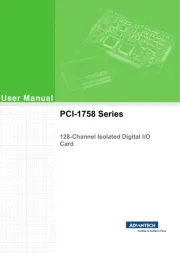
30 Juli 2025
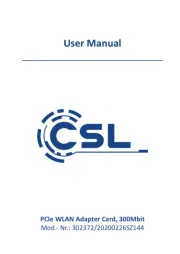
30 Juli 2025
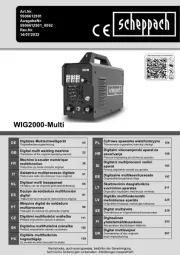
30 Juli 2025
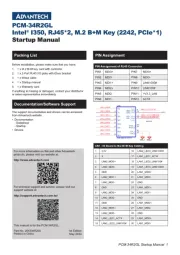
30 Juli 2025
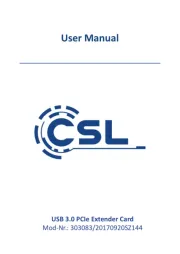
30 Juli 2025
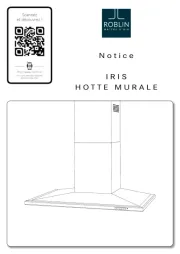
30 Juli 2025
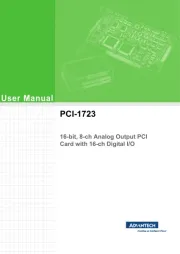
30 Juli 2025
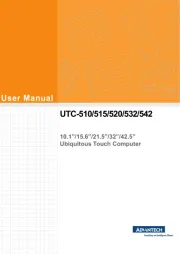
30 Juli 2025
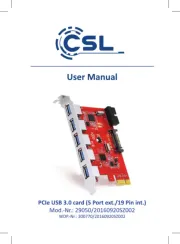
30 Juli 2025
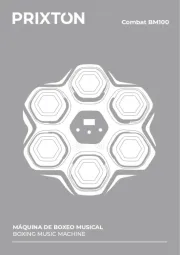
30 Juli 2025